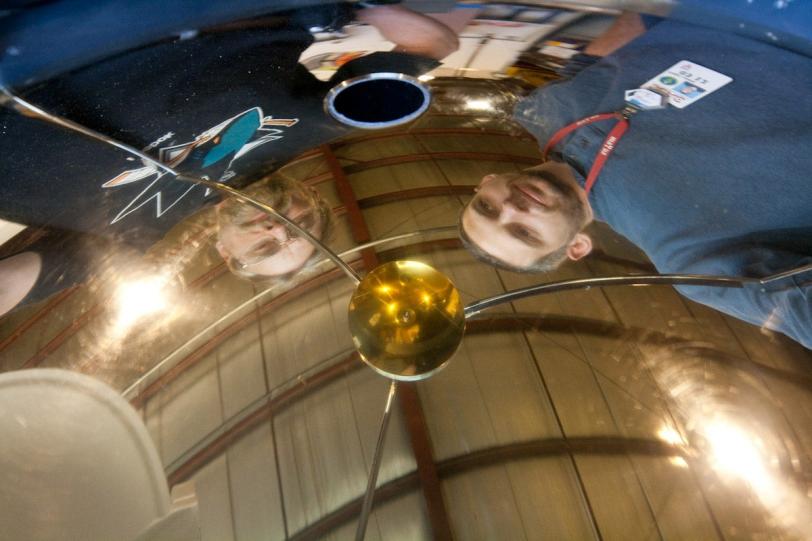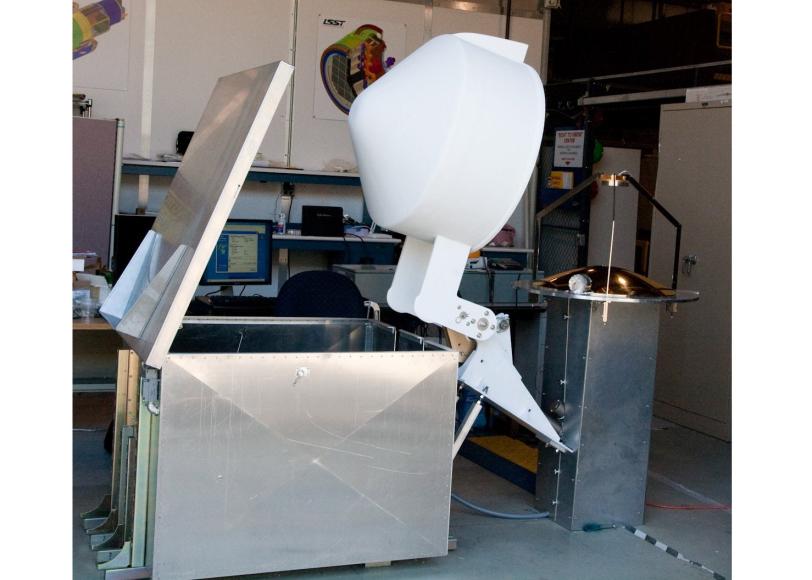RASICAM Leaves for Chile and the Dark Energy Search
Last week the SLAC-built Radiometric All Sky Infrared Camera, or RASICAM, passed its final acceptance test before being partially disassembled, crated up and shipped off to Arizona.
By Lori Ann White
Last week the SLAC-built Radiometric All Sky Infrared Camera, or RASICAM, passed its final acceptance test before being partially disassembled, crated up and shipped off to Arizona. Its final destination is Cerro Tololo Inter-American Observatory in Chile, where it will help the Dark Energy Survey Camera, DECam, search for dark energy – the unexplained force apparently making the expansion of the universe speed up.
With its 76,800 pixels, RASICAM is tiny compared to its partner, the 500 mega-pixel DECam, but it has a big job to do. It will spend nights mapping the trajectories of high cirrus clouds and contrails, invisible to the naked eye, and telling the Victor M. Blanco Telescope where best to find clear sky so that the DECam, mounted on the front of the telescope, can take good images.
Arriving in Chile in about two weeks, RASICAM will be met by its SLAC builders for reassembly and commissioning. RASICAM and DECam are set to begin working in tandem by the end of this year.

